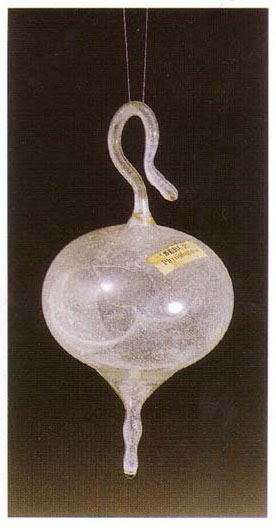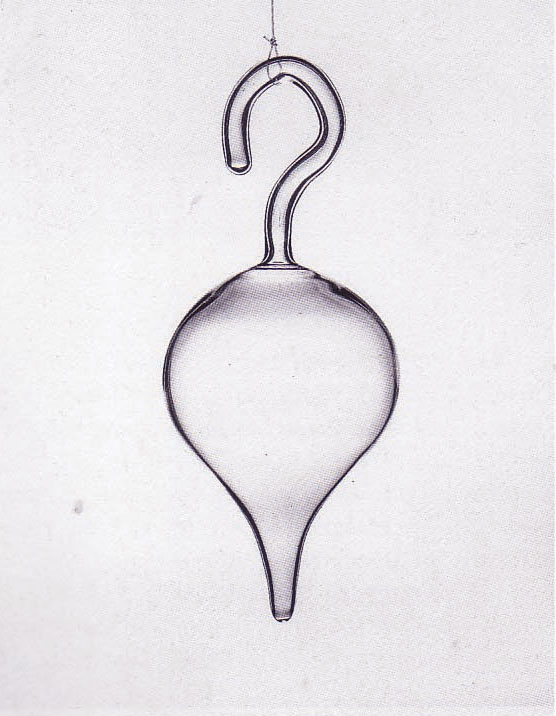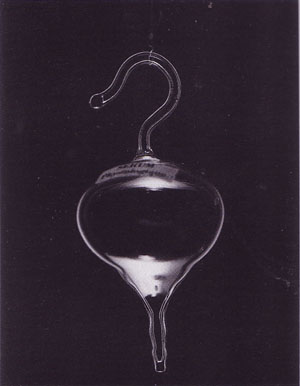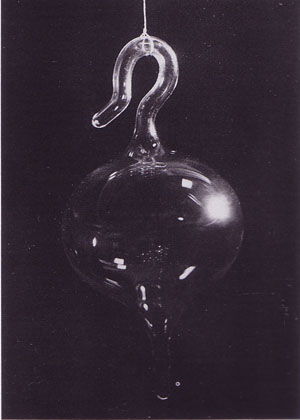
Paris Air
or
Air de Paris (50 cc of Paris Air)
 |
| Original version, Dec. 1919 |
|
Original Version:
Dec. 1919, Paris |
A glass phial filled with genuine Paris air, this Readymade acts as a type of portable souvenir, which Duchamp originally gave to his friend Walter Arensberg. Duchamp had a pharmacist empty the ampoule, which originally contained serum, and then seal it again once air replaced its original contents. Accordingly, (and in typical Duchampian fashion) Duchamp attached a label with "Serum Physiologique" ("Physiological Serum") printed on it (Schwarz 676). As Ramirez explains, in this state Paris Air, unlike most other Readymades, is "extremely fragile" (46).
This piece begs for a sexual interpretation. The concept of air purposely contained within a sealed space such as this phial suggests sexual aromas. As Ramirez explains, the sexual aroma contained within it "cannot escape" (46). It is the personification of an isolated female similar to that seen in the Large Glass. This personification may be seen as not only sexual, but also perhaps autobiographical. Schwarz suggests that Paris Air's creation may have been an unconscious reaction to Duchamp's sister Suzanne's marriage to a Rouen pharmacist, who had "emptied" her of vital energy and left her only "air?" (202). (However, this still springs from the general assumptions that Duchamp had a sexual desire for his sister.)
 |
| Replica, 1949 |
Paris Air also has a clear connection to the concept of measurement; it illustrates Duchamp's toying with the rules, or standards, of measurement. Schwarz explains this idea in detail: When reproduced on a postcard in 1937, Paris Air was identified as "Ampoule contenant 50 cc d'air de Paris." This title was mathematically inaccurate, considering the original version of Paris Air held over two times this volume of air. Typically, Duchamp embraced this inaccuracy; when issuing the edition of miniatures for the The Box in a Valise in 1941, he made sure to make them all hold 50 cc of air. However, when creating a replica of the original version in 1949 (because it had broken), Duchamp made sure to repeat the "original" size of the ampoule. This simultaneous embrace and rejection of measurement standards illustrates the duality at the center of the artist's philosophy for making art (676).
Replicas:
1) 1949, Paris - New York
Philadelphia Museum of Art
The Louise and Walter Arensberg Collection
Selected in Paris by Henri-Pierre Roche
Under Duchamp's request to replace original after it broke
2) 1960, New York
Collection of Arturo Schwarz, Milan
Version in The Box in a Valise
 |
| Replica, 1963 |
4) 1964, Milan
Edition of eight, identical in size to original version
Inscribed on center of each: "Marcel Duchamp/ 50cc air de Paris"
Each in a small wooden case (14.5 x 8.5 x 8.5 cm)
 |
| Replica, 1964 |